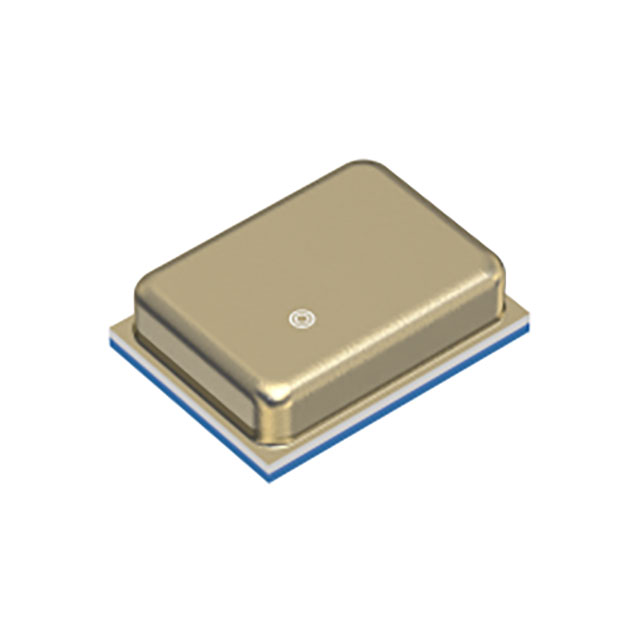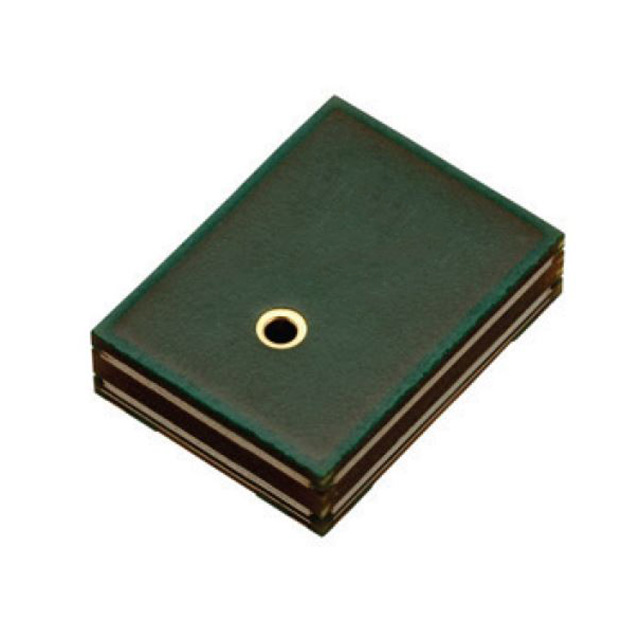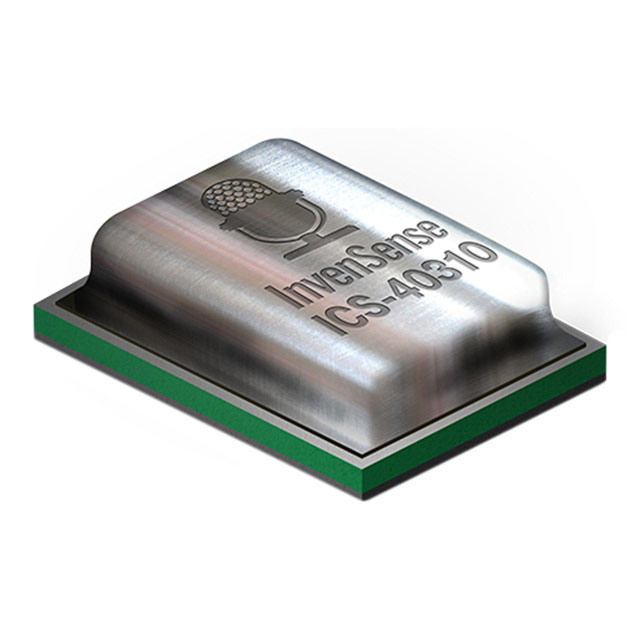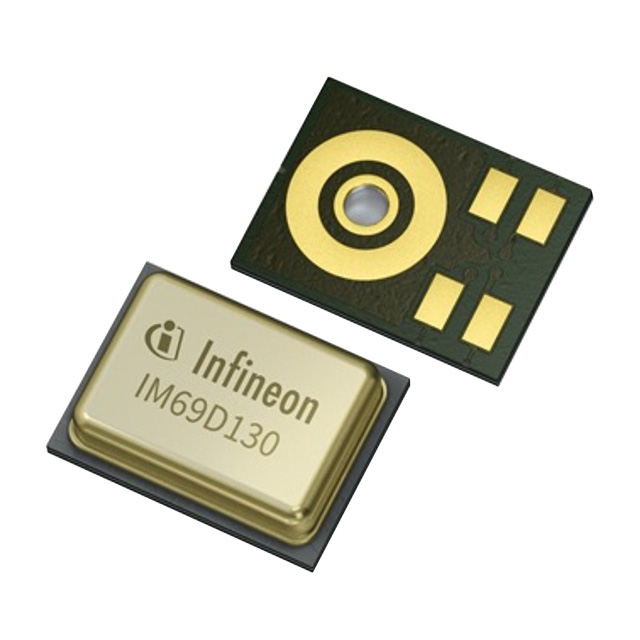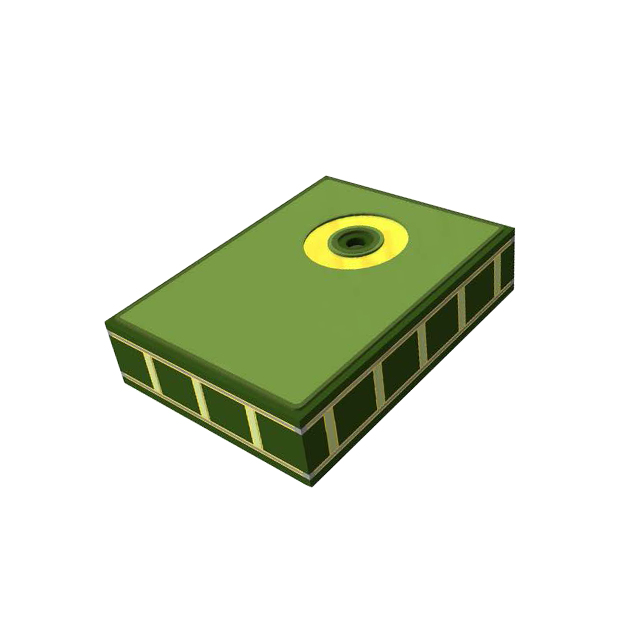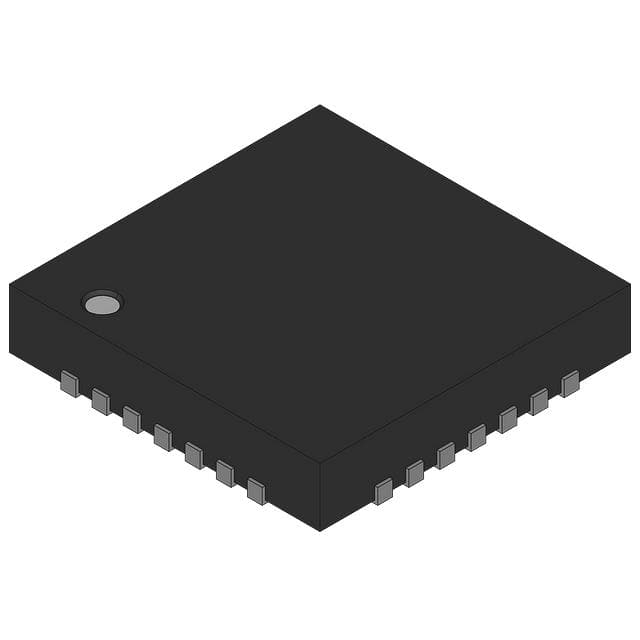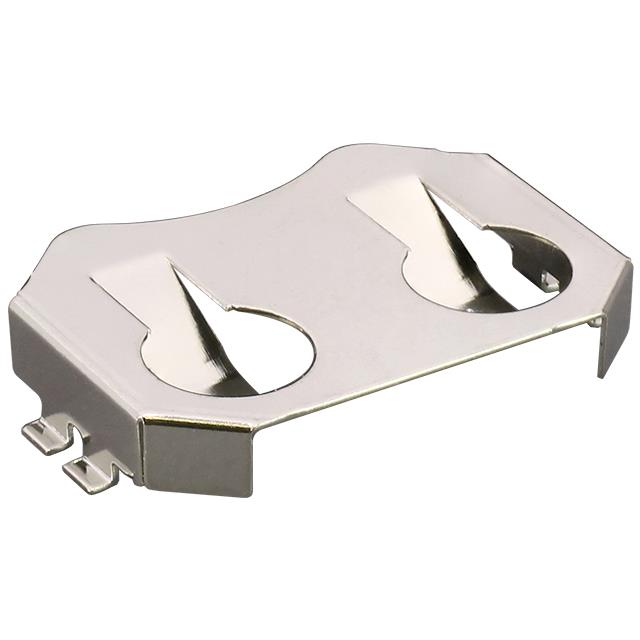Texas Instruments ULN2003ADR
ULN2003ADR is a common high current power driver produced by STMicroelectronics. It is a variant of the ULN2003 series and is usually used to control high current loads such as stepper motors, relays, solenoid valves, etc.
STM32F407VGT6 microcontroller
TM32F407VGT6 is a powerful and flexible microcontroller suitable for a variety of embedded applications. Its high performance, rich peripheral interfaces and powerful processing capabilities make it an ideal choice for developing complex systems.
MCIMX6G2CVM05AB
MCIMX6G2CVM05AB is a powerful application processor that combines high-performance processing capabilities and rich multimedia functions, making it very suitable for a variety of embedded applications. Its low power consumption characteristics and flexible interface design enable it to perform well in various industrial and consumer applications.
STM32F405RGT6
The STM32F405RGT6 is a high-performance 32-bit microcontroller produced by STMicroelectronics. It is based on the ARM Cortex-M4 core and is suitable for embedded applications that require high performance and processing power.
STM32F030C8T6
STM32F030C8T6 is a powerful and affordable microcontroller suitable for a variety of low-power and low-cost embedded applications. Its flexible peripherals and diverse application areas make it a popular choice for developers.
ULN2803ADWR
Overview of ULN2803ADWR features, functions, similarities, pinouts and related Q&A
ULN2803A
ULN2803A integrated circuit working principle, characteristics, applications, similar, and related questions and answers
STM32F103RCT6
STM32F103RCT6 is a powerful and resource-rich 32-bit microcontroller suitable for a variety of embedded applications. Its powerful computing power, rich peripheral interfaces and low power consumption make it widely used in consumer electronics, industrial control, Internet of Things and other fields.
LM358DR
LM358DR is a dual operational amplifier produced by Texas Instruments, which is widely used in analog signal processing applications. It belongs to the LM358 series and has a "DR" suffix, indicating that its package is SOIC-8 (Small Outline Integrated Circuit 8-pin package), which is suitable for surface mount technology (SMT)
W25Q128JVSIQ
W25Q128JVSIQ is a NOR Flash memory chip produced by Winbond Electronics, belonging to the W25Q series. It is designed to provide high performance, reliability and non-volatile storage of large amounts of data.
STM32F407ZGT6
STM32F407ZGT6 is a high-performance microcontroller produced by STMicroelectronics. It belongs to the STM32F4 series. It is based on the ARM Cortex-M4 core and has a DSP (digital signal processing) instruction set and a floating-point unit (FPU). It is very suitable for embedded applications that require high processing performance.
AD7606BSTZ
The AD7606BSTZ is an analog-to-digital converter (ADC) produced by Analog Devices, designed for multi-channel, high-precision, high-speed signal acquisition applications. It is suitable for a variety of industrial and measurement scenarios.
STM32F103VCT6
STM32F103VCT6 is a STM32F1 series microcontroller produced by STMicroelectronics (STMicroelectronics). It is based on the ARM Cortex-M3 core and has excellent performance and rich peripheral functions, suitable for various embedded applications.
TPS5430DDAR
TPS5430DDAR is a high-efficiency buck regulator (Buck Converter) from Texas Instruments.The device is provided in a small SOIC (8-pin) package for compact design.
TMS320F28335PGFA
The TMS320F28335PGFA is a high-performance 32-bit digital signal processor (DSP) produced by Texas Instruments, belonging to the F2833x family in the C2000 series of microcontrollers.
Texas Instruments ULN2003ADR

ULN2003ADR Introduction
ULN2003ADR is a common high current power driver produced by STMicroelectronics. It is a variant of the ULN2003 series and is usually used to control high current loads such as stepper motors, relays, solenoid valves, etc.
ULN2003ADR Main Features:
| Features | Description |
|---|---|
| Output current | 500 mA maximum per channel (1 A peak) |
| Operating voltage | Range 5V to 50V |
| Input logic compatibility | Compatible with TTL and CMOS level inputs |
| Output type | 7 Darlington power transistors (per channel) |
| Flywheel diode | Built-in flywheel diode for inductive load protection |
| Saturation voltage drop (V_CE(sat)) | Low saturation voltage drop to reduce power loss |
| Overload protection | Built-in overload protection function to enhance reliability |
| Overtemperature protection | Built-in overtemperature protection function to avoid overheating damage |
| Package type | 16-Pin SOIC, suitable for most electronic circuit designs |
| Common applications | Stepper motor drive, relay control, solenoid valve control, high-power lighting control, etc. |
ULN2003ADR Application Areas:
Stepper Motor Drive: ULN2003ADR is often used to control the individual coils of stepper motors, especially in the drive circuit of stepper motors, because it can handle high currents and provide an efficient current path.
Relay Control: Due to its high current output capability, it is often used in relay drive circuits to control the switching of large machinery or equipment.
Lighting Control: ULN2003ADR is an ideal choice when multiple high current loads (such as high-power bulbs) need to be controlled.
Solenoid Valve Control: It can be used to control solenoid valves in pneumatic or hydraulic systems.
Load Switching: Suitable for any load switching occasions that require high current drive.
ULN2003ADR Pin Description (16-Pin SOIC):
Input pins (1-7): Channel 1 through 7 Darlington base input
Output pins (10-16): Channel 10 through16 Darlington collector output
Common pin (9): Common cathode node for flyback diodes (required for inductive loads).
Ground pin (8): Common emitter shared by all channels (typically tied to ground)
Product Comparison
| Feature | ULN2003ADR | ULN2003AD | ULN2004ADR | ULN2004AD |
|---|---|---|---|---|
| Manufacturer | Texas Instruments | Texas Instruments | Texas Instruments | Texas Instruments |
| Number of Channels | 7 Channels | 7 Channels | 7 Channels | 7 Channels |
| Maximum Output Current/Channel | 500 mA (Peak 1 A) | 500 mA (Peak 1 A) | 500 mA (Peak 1 A) | 500 mA (Peak 1 A) |
| Operating Voltage Range | 5V to 50V | 5V to 50V | 5V to 50V | 5V to 50V |
| Input Logic Compatibility | TTL / CMOS | TTL / CMOS | TTL / CMOS | TTL / CMOS |
| Flyback Diodes | Built-in flyback diode protection | Built-in flyback diode protection | Built-in flyback diode protection | Built-in flyback diode protection |
| Max Operating Temperature | 125°C | 125°C | 125°C | 125°C |
| Package Type | 16-SOIC (Surface Mount) | 16-SOIC (Surface Mount) | 16-SOIC (Surface Mount) | 16-SOIC (Surface Mount) |
| Pin Pitch | 1.27 mm | 1.27 mm | 1.27 mm | 1.27 mm |
| Physical Dimensions (L x W x H) | 9.90 mm x 3.90 mm x 1.75 mm | 9.90 mm x 3.90 mm x 1.75 mm | 9.90 mm x 3.90 mm x 1.75 mm | 9.90 mm x 3.90 mm x 1.75 mm |
| Input Voltage Range | 5V to 15V (typical 5V) | 5V to 15V (typical 5V) | 5V to 15V (typical 5V) | 5V to 15V (typical 5V) |
| Overload Protection | Yes (Overcurrent Protection) | Yes (Overcurrent Protection) | Yes (Overcurrent Protection) | Yes (Overcurrent Protection) |
| Overtemperature Protection | Yes (Thermal Shutdown Protection) | Yes (Thermal Shutdown Protection) | Yes (Thermal Shutdown Protection) | Yes (Thermal Shutdown Protection) |
ULN2003ADR Similar or alternative models
If you are looking for similar or alternative models of ULN2003ADR, the following are some common alternatives. These models are similar to ULN2003ADR in function and performance, and are suitable for applications of high current drive and control of high power loads.
1. ULN2003A
Description: Basically the same as ULN2003ADR, with the same functions and performance. The main difference is the package type and pin arrangement. ULN2003A also supports 7-channel output, which is commonly used in applications such as stepper motor and relay control.
Features:
Output current: 500 mA maximum (1 A peak) per channel
Operating voltage range: 5V to 50V
Built-in flywheel diode
2. ULN2803A
Description: Similar to ULN2003, but this model has 8 output channels (one more than ULN2003). This makes it suitable for applications that require more output channels.
Features:
Output current: 500 mA maximum (1 A peak) per channel
Operating voltage range: 5V to 50V
Built-in flywheel diode
Provides 8-channel output for more complex load control
3. ULN2004A
Description: Very similar to ULN2003A, but in some cases, ULN2004A provides additional current protection functions to enhance system reliability.
Features:
Output current: 500 mA maximum per channel
Built-in protection diodes
Applicable to standard TTL and CMOS input logic
4. L293D
Description: Although primarily a dual H-bridge driver, the L293D can also be used to drive stepper motors and other inductive loads, similar to the ULN2003ADR, but it has a different circuit structure (H-bridge design) and supports bidirectional control.
Features:
600 mA maximum per channel (peak 1.2A)
Operating voltage range: 4.5V to 36V
Supports bidirectional control, ideal for applications such as stepper motors
5. TLC5958
Description: The TLC5958 is a power driver chip from TI designed for high current, high voltage control applications, similar to the ULN2003ADR, but provides higher control accuracy and multiple operating modes.
Features:
Maximum current of 2 A per channel
Adjustable output current and voltage for complex load control
Built-in over-temperature and over-current protection
6. MOC3020
Description: Although MOC3020 is an optocoupler, it is also suitable for some applications that need to drive high-current loads, especially for relays or other switching devices controlled by high voltage.
Features:
Maximum output current of 1 A
Operating voltage range: 5V to 40V
Relay and load switching for high-voltage systems
7. TIP120
Description: TIP120 is an NPN Darlington power transistor that can be used in similar high-current control applications, suitable for driving relays, stepper motors, etc. Although it only provides a single-channel output, it can be used as a substitute, especially in single-channel drive applications.
Features:
Output current: 5 A maximum
Supports higher current output, suitable for some high-power applications
Suitable for TTL control level
8. IRF540N (MOSFET)
Description: If your application requires high switching speed, you can consider using N-channel MOSFET such as IRF540N. Although it is not a relay driver, it can replace traditional Darlington output devices and is suitable for fast switching and high current loads.
Features:
Output current: 33 A maximum
Low switching loss, very suitable for loads that require fast switching
Common alternatives to ULN2003ADR include ULN2003A, ULN2803A, ULN2004A, etc. The main difference is the number of channels and some other functions (such as current protection, etc.).
If you need additional channels or functions, you can choose ULN2803A or TLC5958, but if your application requires particularly high drive current, you can consider using MOSFET or Darlington devices (such as TIP120 and IRF540N).
ULN2003ADR FAQs
1. What are the main applications of ULN2003ADR?
ULN2003ADR is widely used in applications that require high current drive and control of high-power loads, mainly including:
Stepper motor drive: used to drive each coil of the stepper motor.
Relay drive: control the switch of devices such as relays or solenoid valves.
Light control: used to control high-power lights or other high-current loads.
Solenoid valve control: control solenoid valves in pneumatic or hydraulic systems.
Load switching: suitable for other load control that requires high current drive.
2. How to connect ULN2003ADR to drive a stepper motor?
Connection method:
Connect the input port (pins 1-7) of ULN2003ADR to the output of a microcontroller or other control logic circuit.
Connect the output port (pins 11-17) to each coil end of the stepper motor (usually four coils).
Connect the **common port (pin 9)** to the common end of the load (usually ground).
Connect power to ULN2003ADR, usually the voltage required by the stepper motor.
In this way, ULN2003ADR will drive each coil of the stepper motor according to the input signal, and protect the drive circuit from reverse current damage through the flywheel diode.
3. What is the difference between ULN2003ADR and ULN2803A?
ULN2003ADR and ULN2803A are both 7-channel Darlington current driver chips, but the difference between them is:
ULN2003ADR: Usually used to control a smaller number of loads (up to 7 channels), suitable for driving stepper motors, relays, etc.
ULN2803A: Similar to ULN2003ADR, but with 8-channel output, suitable for applications that require more output channels, increasing the ability to drive more loads.
4. How does ULN2003ADR protect the load?
Flywheel diode protection: The ULN2003ADR has an integrated flywheel diode that can effectively protect inductive loads such as relays and stepper motors. When the load is disconnected, the reverse current of the inductive load may cause circuit damage, and the flywheel diode can guide this part of the reverse current to the power supply or ground line to avoid damaging the drive circuit.
Overload and overtemperature protection: Although the ULN2003ADR itself does not have built-in thermal shutdown or current protection, its low saturation voltage drop characteristics and design enable it to work efficiently under normal loads and reduce the risk of overheating.
5. Can the ULN2003ADR drive a DC motor?
Yes, the ULN2003ADR can be used to drive a DC motor, especially in applications with lower current requirements (up to 500 mA/channel). It can be used as a switching element in a DC motor drive circuit, and the appropriate control logic signal can be used to control the start and stop of the motor.
6. Can the input of the ULN2003ADR be directly connected to a microcontroller?
Yes, the inputs (pins 1-7) of the ULN2003ADR are TTL and CMOS compatible and can be directly controlled by a microcontroller (such as Arduino, STM32, etc.). The output logic signals (5V or 3.3V) of the microcontroller can directly drive the ULN2003ADR without additional level conversion.
7. Is the ULN2003ADR suitable for high-frequency applications?
The ULN2003ADR is more suitable for low to medium frequency switching control applications. Because it uses Darlington transistors internally, it has a certain switching delay, so it may not perform as well as MOSFET or other high-speed switching elements in high-frequency switching applications. If the application frequency is higher (such as under PWM drive), you may need to choose an alternative solution that is more suitable for high frequencies, such as a solid-state relay (SSR) or MOSFET.
8. What types of motors can the ULN2003ADR be compatible with?
The ULN2003ADR is mainly used to drive stepper motors. It is designed specifically for controlling the coils of stepper motors, supporting a maximum current of 500mA per channel. It can also be used to control DC motors, but it should be noted that loads beyond its maximum output current range may damage the chip.
9. Can the ULN2003ADR work in a high temperature environment?
The ULN2003ADR can work normally under standard operating conditions, but if the operating temperature is high, additional heat dissipation measures may be required. The maximum operating temperature of the chip is generally 125°C, and exceeding this temperature may affect its stability and life. When used in a high temperature environment, it is recommended to ensure good ventilation or additional heat dissipation measures.

